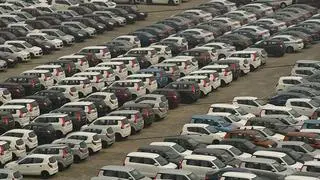As the demand for Lithium-ion batteries in electric vehicles (EVs) soars, a policy brief created for an official engagement group of the G20 has suggested setting up a global fund to invest in increasing recycling capacities.
The policy paper — Building a resilient EV battery value chain — submitted to Task Force-4 (TF-4) also recommended creating a separate fund to invest in battery recycling technologies.
The paper points out that battery recycling is at a nascent stage with gaps concerning technology in reducing recycling cost and improving material recovery capacity. It favours a comprehensive approach for recycling end of life EV batteries to meet rising demand for minerals such as Lithium, Cobalt, Nickel and Graphite.
For instance, according to Benchmark Intelligence, the global Lithium supply stood at 678 kilo tonnes in 2022 with demand projected to hit 4,000 kilo tonnes by 2035. Similarly, cobalt supply stood at 177 kilo tonnes in 2022 and by 2035, 489 kilo tonnes would be required. For Nickel, the supply last year stood at 3,160 kilo tonnes, which is expected to surge to 6,200 kilo tonnes by 2035.
The paper is written by Pradeep Karuturi from OMI Foundation’s Centre for Clean Mobility as well as Perminder Jit Kaur and Rohan Malhotra from the DST’s Centre for Policy Research at the Indian Institute of Science, Bangalore.
Recycling capacity
OMI Foundation’s Karuturi told businessline that a central fund should be set up to provide incentives for scaling up recycling facilities globally.
When asked whether creating such a fund is challenging, he said, “I agree, it is challenging, but there is huge potential for battery material recycling as these materials are not easily available and some minerals such as Cobalt (Congo) and Nickel (Russia and Indonesia) are concentrated in a few regions across the globe.”
Recycling has a huge business case as a lot of countries have commitments for 2030 and the EU till 2035 for phasing out ICE vehicles, he added.
“So, you need more materials and existing mines are not sufficient. One has to look for different sources of which one can be battery materials recycling,” he emphasised.
Citing examples, Karuturi said the EU has kept a target that from 2025, a certain per cent of raw materials used by a battery manufacturer has to come from recyclers.
Cost economics
The paper noted that existing battery waste materials have immense potential and can generate value of about $4,800-5,200 per tonne.
In Li-ion batteries, cathode materials vary, but standard formulations include lithium, aluminium, cobalt, manganese, and nickel, while the anode is made of graphite.
The policy brief points out that India’s recycling and reuse volume is expected to be more than 20 gigawatt hour (GWh) in 2030. The cumulative potential of lithium-ion batteries in India from 2022–30 across all segments is estimated at around 600 GWh (base case).
The recycling volume from deploying these batteries is projected to reach 128 GWh by 2030, of which almost 59 GWh will be from the EV segment. The recycling industry alone could create a $6-billion profit pool by 2040. Revenue could exceed $40 billion, a three-fold increase from 2030 values.
Last year, India passed the Battery Waste Management Act, which deals with handling waste batteries, where producers have extended producer responsibility obligation for the battery and must ensure recycling or refurbishing of the same. It has set targets for recoverable materials out of the battery’s dry weight at 70 per cent by FY25 and 90 per cent by FY27.









Comments
Comments have to be in English, and in full sentences. They cannot be abusive or personal. Please abide by our community guidelines for posting your comments.
We have migrated to a new commenting platform. If you are already a registered user of TheHindu Businessline and logged in, you may continue to engage with our articles. If you do not have an account please register and login to post comments. Users can access their older comments by logging into their accounts on Vuukle.